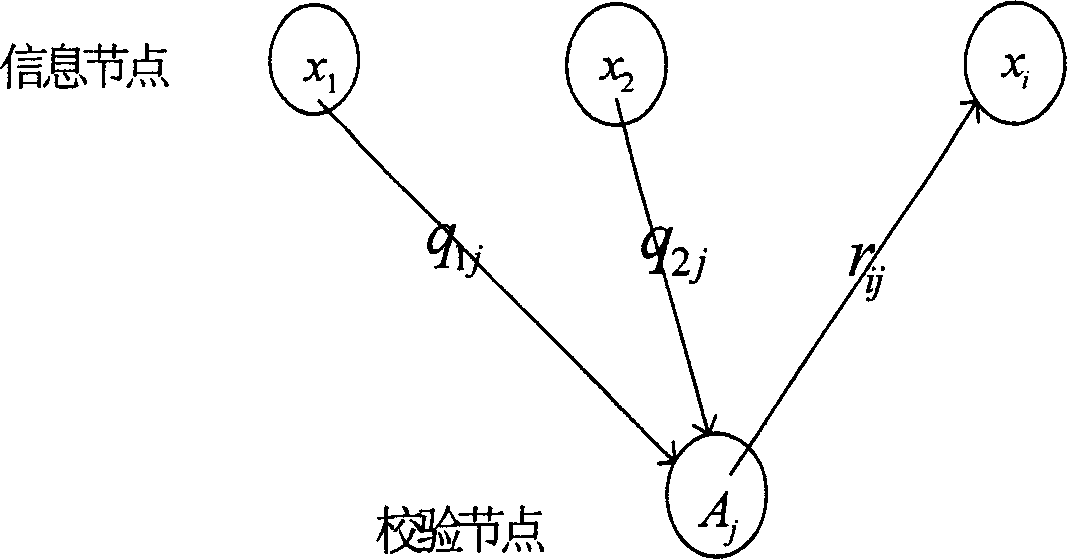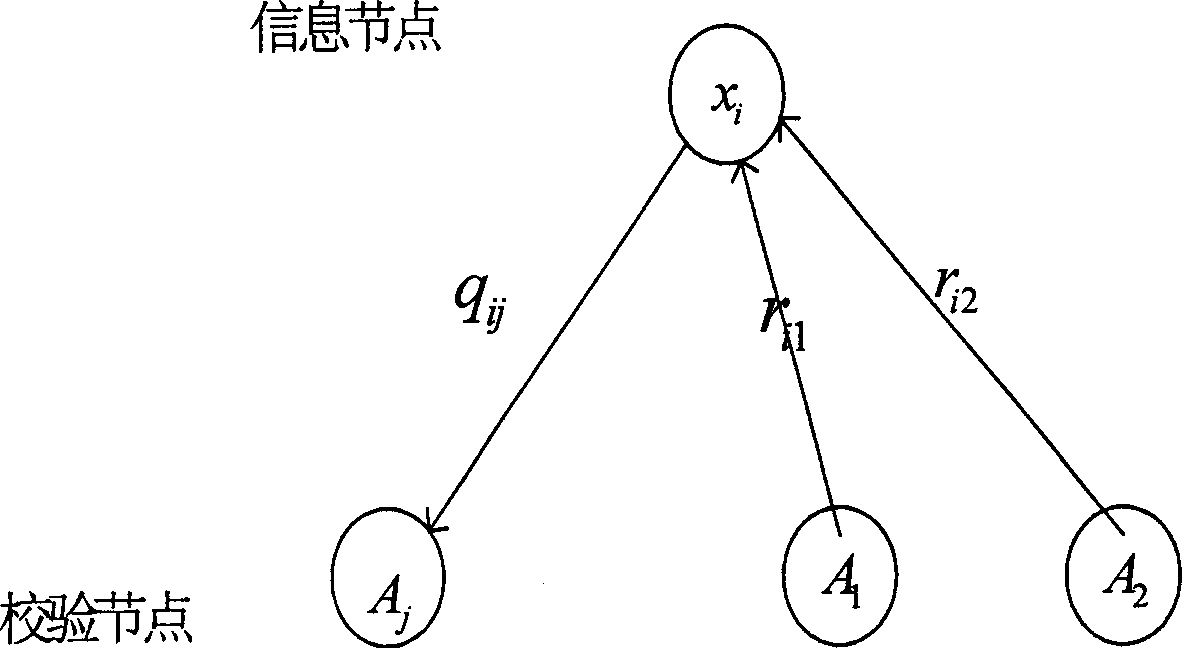Method for decoding low-density block check code
A check code, low-density technology, applied in the field of low-density packet check code decoding, can solve the problem of slow convergence speed of the MAP algorithm
- Summary
- Abstract
- Description
- Claims
- Application Information
AI Technical Summary
Problems solved by technology
Method used
Image
Examples
Embodiment Construction
[0019] specific implementation
[0020] The present invention will be described in further detail below in conjunction with the accompanying drawings and specific embodiments.
[0021] figure 1 A simple example of using a bipartite graph to represent a low density check code is given. LDPC code is a kind of linear block code based on sparse parity check matrix. In 1981, Tanner proposed to use a bipartite graph to represent a low-density linear block code. Since then, the bipartite graph has become the main tool for analyzing LDPC codes. Assuming an LDPC code, the information bit length is K, the code length is N, and the parity bit is M=N-K, then the parity check matrix A of the code is a matrix with a size of M*N. The bipartite graph of H is described as follows: the N nodes below the bipartite graph represent N codewords and become message nodes (massage nodes); the M nodes above represent M check formulas and are called check nodes. . When the lower information node an...
PUM
 Login to View More
Login to View More Abstract
Description
Claims
Application Information
 Login to View More
Login to View More - Generate Ideas
- Intellectual Property
- Life Sciences
- Materials
- Tech Scout
- Unparalleled Data Quality
- Higher Quality Content
- 60% Fewer Hallucinations
Browse by: Latest US Patents, China's latest patents, Technical Efficacy Thesaurus, Application Domain, Technology Topic, Popular Technical Reports.
© 2025 PatSnap. All rights reserved.Legal|Privacy policy|Modern Slavery Act Transparency Statement|Sitemap|About US| Contact US: help@patsnap.com



